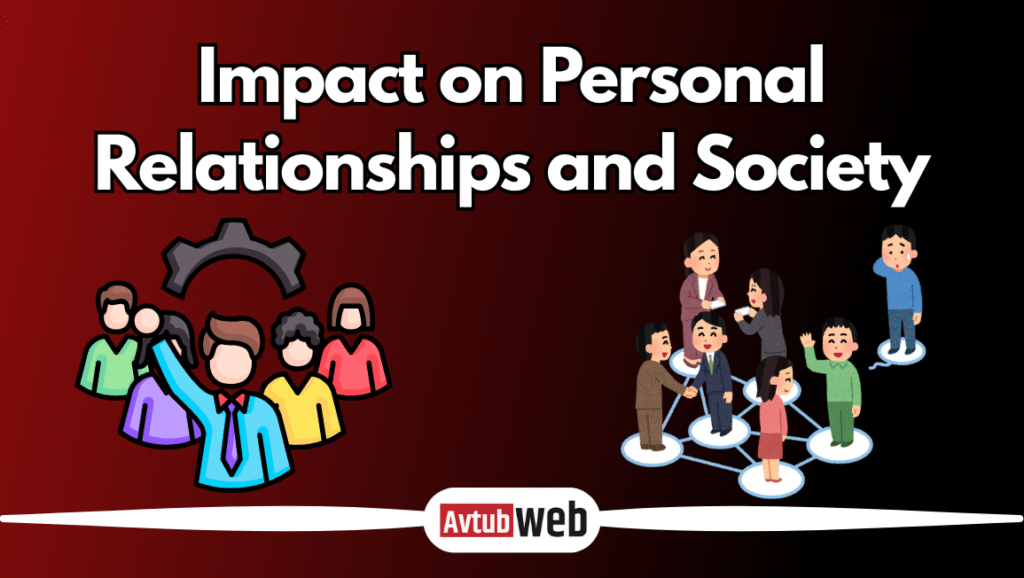Incestflox: Myths, Controversy, and Digital Obsession
Incestflox: Myths, Controversy, and Digital Obsession is a term used for online content that focuses on fictional stories about incest. While some people are curious about these stories because they explore dark or emotional topics, others worry they might cross moral or legal lines. The topic is controversial because it mixes creative freedom with sensitive themes, raising questions about what’s okay to share online and how it affects people who read or watch this kind of content.
What is Incestflox?
Incestflox is a word made by combining “incest” and “flock.” It refers to online groups and communities interested in stories about incest, which is usually a taboo topic. This term shows how such content has grown from being hidden to becoming more common on the internet. It includes made-up relationships shared in fan fiction, user-created stories, and streaming sites.
Evolution in Digital Culture
Stories about taboo topics like incestflox have spread more widely because of digital storytelling. In the past, these stories were rare and hard to find. Now, people can explore these themes more openly thanks to online anonymity and user-created content. Algorithms on media platforms sometimes help these stories become popular, raising questions about who is responsible for what we watch and how aware audiences are.
Popularity in Online Platforms
Incestflox stories show up on forums, fan fiction websites, and some streaming services. These controversial themes attract viewers, even though they are not mainstream. People are interested in the complex stories and different ways these taboo topics are shown, but sometimes these stories clash with social rules and media ethics.
Historical Context and Rise of Incestflox
Incest-related stories have been around for a long time, showing up in old plays like Oedipus Rex and books like Flowers in the Attic. These stories were often used to talk about power, family problems, or emotional struggles. With the internet, such themes became easier to find and share, especially through fan fiction and online platforms. Now, what was once hidden or rare is more visible, leading to more discussion about whether this kind of content should be accepted or limited.
Early Depictions in Media and Literature
Stories about incestuous relationships have been around for a long time, in plays like Oedipus Rex and books like Flowers in the Attic. These stories often focused on power struggles, fate, and emotional pain within families. In the past, they were used to challenge what was considered morally acceptable and taboo.
How the Internet Amplified the Trend
With the internet, stories about incestuous themes became more visible. Online conversations and new media trends made it easier to explore these topics. The internet spreads content quickly, sometimes without the usual checks and rules from traditional media or censorship.
Controversial Moments in Its Timeline
A few key moments made incestflox more talked about, like when Game of Thrones showed incestuous relationships openly. This caused strong reactions from society and media, leading to debates about whether these portrayals are art or if they might encourage harmful behavior.

Myth vs Reality: What People Get Wrong
Many people think that watching or reading incestflox content means someone supports it in real life, but that’s not always true. Most of the time, it’s just fiction that people explore out of curiosity or for the story, not because they agree with it. Viewers usually know the difference between real-life actions and made-up stories, though it’s still important to be careful about how such content affects others and how it’s shared online.
Common Misconceptions About Incestflox
Many people think that liking incestflox content means supporting it or wanting it to happen in real life. This is not true. These are often just stories that explore ideas and don’t show real desires or actions. How people see these stories depends on their culture and how they consume media.
Separating Fiction from Influence
Research shows most viewers know the difference between made-up stories and real-life consent problems. Still, sometimes media can blur the lines, which can affect people emotionally. It’s important to be media literate and sensitive to avoid misunderstanding.
Moral Panic and Media Sensationalism
Media often exaggerates fears about incestflox, causing moral panic instead of understanding. Sensational news may miss how complex these stories are or how creators responsibly explore taboo topics.
Psychological and Ethical Considerations
People are sometimes drawn to taboo content like incestflox out of curiosity, personal experiences, or interest in complex stories. But it also raises ethical concerns. Content creators need to think about how their work might affect others, especially if it shows harmful behavior. Repeated exposure to such content can affect some viewers’ mental health, so it’s important to watch responsibly and for creators to share content with care and awarenes
Why People Engage with Taboo Content
Some people are curious about taboo topics or want to understand family issues or emotional trauma through these stories. They may also be attracted to the complexity of these narratives.
Ethical Dilemmas in Media Creation
Creators face tough choices between artistic freedom and the risk of causing harm. Media should be responsible by not making abusive or traumatic themes look normal or attractive.
Viewer Impact and Mental Health Concerns
Repeated exposure to taboo stories can affect sensitive viewers, possibly causing anxiety or guilt. Being aware and careful about content, moderation, and creation can help protect vulnerable people.

Legal Landscape Around Incestflox
The laws around incestflox content are different in every country. Some places strictly ban anything that looks like real-life abuse or involves minors, even if it’s fictional. Others allow certain content if it’s clearly made-up. This creates confusion for websites and creators about what’s allowed. Some platforms have even faced legal trouble for hosting this kind of content, which shows the need for clear rules and responsible moderation.
How Different Countries Treat This Content
Laws about incestuous content differ worldwide. Some places have strict rules, especially to protect minors or prevent exploitation. Others separate fiction from real-life actions, making regulation complicated.
Censorship, Regulation, and Grey Zones
It’s difficult to know exactly where legal taboo content ends and illegal material begins. Censorship debates continue about how to protect social values while allowing creative freedom and storytelling ethics.
Case Studies of Legal Action
Sometimes platforms get in trouble for hosting incestuous content, which can lead to content removal or sanctions. These cases show the need for clear moderation policies that respect responsibility.
Role of Social Media in Incestflox’s Spread
Social media plays a big part in spreading incestflox content. Algorithms often push content that gets more clicks and comments—even if it’s controversial. Fan pages, memes, and online groups also help this type of content grow by making it easier for people to find and talk about. While some users just see it as entertainment, it can also blur the lines of what’s acceptable, making it harder for platforms to control.
Algorithmic Promotion and Virality
Social media algorithms may accidentally promote incestflox by pushing popular or engaging content. This makes it harder for platforms to regulate content responsibly.
Influence of Memes and Online Communities
Memes and fan fiction groups help normalize taboo stories by encouraging discussion and engagement. These communities shape how people interpret and debate these narratives but also raise concerns about social impact. Visit for Incestflox: Understanding the Controversial Rise of Taboo Narratives in Digital Culture.
Platforms’ Responses and Moderation Policies
Streaming and social media sites have different rules to balance creative freedom and user safety. Moderation is tough because it must control content without pushing away users or blocking artistic expression.

Impact on Personal Relationships and Society
Incestflox can affect how people think about family roles and relationships. Some stories challenge traditional values, which may confuse or upset certain viewers. While some see it as just fiction, others worry it might make unhealthy ideas seem normal. Different age groups react differently—young people online might be more open to such topics, while older generations often find them disturbing.
Shifts in How People View Family Narratives
Incestflox changes how families and society view taboo topics. These stories challenge traditional ideas about family, power, and consent, leading to new conversations.
The Normalization Debate
Some worry that more exposure to incestuous stories might make harmful behavior seem normal. Others think these stories help people understand deep emotional and social problems. How audiences react depends on their sensitivity and culture.
Generational Differences in Perception
Younger people, who grew up online, may see incestflox differently than older generations, showing changes in awareness and media ethics.
Content Creation, Streaming, and Monetization
People who create incestflox content, along with streaming platforms, can make money through ads, subscriptions, or selling related items. But this raises questions about whether it’s right to earn from stories that some find harmful or controversial. It’s important for creators to think about how their work affects viewers and to balance making money with being responsible.
Who Is Profiting From Incestflox?
Creators, platforms, and influencers can make money from taboo content through ads, subscriptions, or merchandise. This raises ethical questions about profiting from controversial themes.
The Line Between Art and Exploitation
It’s important to tell whether content is artistic expression or exploitation. Creators should balance storytelling with responsibility toward society.
Role of Influencers, Creators, and Studios
Influencers and studios influence how audiences and society react by choosing how they show taboo topics. Their media awareness and ethics shape trends and engagement.

Future of Incestflox and Taboo Media
The future of incestflox and similar taboo content is uncertain. People want more honest and careful storytelling that respects how sensitive these topics are. There may be stricter rules or better ways to control what gets shared online. At the same time, some think these stories could become more accepted if handled responsibly. Overall, creators and platforms will need to find a balance between freedom and respect for viewers.
Evolving Audience Expectations
As people become more aware, they want more responsible storytelling and sensitivity from content creators. Transparency about what’s being shown and respect for psychological and cultural impact are expected.
New Forms of Censorship or Acceptance
In the future, content rules may get better at balancing censorship and cultural discussion. How society handles taboo stories will depend on ethical engagement and awareness.
Where the Industry Might Go Next
Digital platforms may improve content moderation, storytelling analysis, and media education. Audience awareness and responsibility will guide the future of taboo stories online.
Final Thoughts
Both creators and viewers have a role to play in using media responsibly. Creators need to think about how their content affects people, while viewers should be careful and think critically about what they watch. Talking openly about sensitive topics like incestflox with respect and understanding can help everyone handle these issues better, keeping a balance between freedom and the impact on society.



